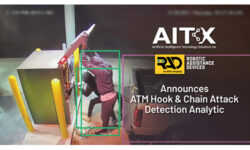Keys to Prescribing the Right Security Measures
Here are tips to help security systems integrators prescribe the appropriate security technology for end user customers.

Today’s security professionals face enormous challenges with so many new technology options available, and with even more flooding the market every year. While these new technologies offer greater integration flexibility for both new and existing platforms, it has become imperative the correct standard of protection be applied, based on the specific, industry needs of the customer.
Particularly, as the merging of physical and cybersecurity progresses, the more thoughtful end users are as they evaluate security technology options, the more effectively security integrators can work with them to ensure their facilities and assets will be secured. Let’s take a closer look at the elements involved.
Address Both Physical & Logical Security
Active/passive physical security: Established to protect personnel, facilities and intellectual property against anticipated threats. These may include a combination of active electronic security countermeasures, such as card access control or video surveillance. Active measures may also be the use of indoor or outdoor alarm and camera systems, partnered with central dispatch centers, designed to detect and observe potential intruders to immediately dispatch authorities. Meanwhile, passive measures can also be implemented and include the effective use of architecture, landscaping and lighting to aid in deterring, disrupting or mitigating potential threats.
Logical information security: The process of protecting the confidentiality, integrity and availability of data from accidental or intentional misuse by people within or outside an organization or facility. Important considerations include limiting information exclusively to authorized entities; preventing unauthorized changes to or the corruption of proprietary data; guaranteeing authorized individuals the appropriate access to critical information and systems; ensuring that data is transmitted to, received by or shared with only the intended party; and providing security for ownership of information.
Physical security policy and programs: Developing and enacting these is critical to the successful maintenance of any physical security platform. This requires a process of creating policies and procedures, and establishing controls to preserve privileged information regarding organizational capabilities and vulnerabilities. In order to accomplish this, start by identifying, controlling and protecting those interests associated with the integrity and the unimpeded performance of a facility. Trained personnel to protect and enforce the security procedures and policies governing a building’s or business’ operations are also critical. All of these components serve to prevent unauthorized access to a facility, tenant space or business assets.
Properly conceived and implemented enterprise security policies, programs and technologies are essential to ensure a facility’s resistance to myriad threats, while simultaneously meeting the demands of uptime, reliability and performance objectives. Security programs are also vital to safeguarding the people, processes, information and equipment housed within a customer’s facility and protected space; these may include life-safety platforms that monitor sensitive, industrial process points that would otherwise be unattended.
Risk and vulnerability assessments: It’s a given that many, if not most, security plans have a “weak spot.” More often than not, that weakness is caused by a lack of consistent and comprehensive risk and vulnerability assessments. Most assessments built into a corporate risk-mitigation strategy only address security issues from an electronic systems’ perspective, instead of evaluating potential flaws from a comprehensive security program viewpoint. In these instances, customers may have stringent regulatory standards that may evolve and change on an annual basis, so keeping all authorized parties and personnel current on the status of these regulations will greatly enhance the proposed solution.
Identify Threats From Every Angle
When reviewing a potential solution, the completed security risk assessments should identify which assets need to be protected and the critical nature of each asset. Then, it should be determined which, if any, systems can be deployed to protect those assets, utilizing a wide range of solutions – from simple barcode tracking to real-time RTLS locating. This must take into account human resources and infrastructure. Facility executives should also verify the extent to which core business activities rely on continuous and uncorrupted operations to more aptly identify and characterize threats.
Security threats should be viewed as any potential events carried out with hostile or malicious intent that will directly affect the host building or organization, and could be capable of causing damage to others. Assessing vulnerabilities is key to bolstering preventive measures in this case, often derived from a systematic survey approach that considers physical, informational and operational features, as well as assets contained within the building or company.
The major takeaway is to clearly understand and document the challenges. Only then can proper solutions be selected and tested appropriately against a range of anticipated, and even some unanticipated, intrusions, attacks and threatening scenarios.
Most assessments built into a corporate risk-mitigation strategy only address security issues from an electronic systems’ perspective, instead of evaluating potential flaws from a comprehensive security program viewpoint.
If you enjoyed this article and want to receive more valuable industry content like this, click here to sign up for our FREE digital newsletters!

Security Is Our Business, Too
For professionals who recommend, buy and install all types of electronic security equipment, a free subscription to Commercial Integrator + Security Sales & Integration is like having a consultant on call. You’ll find an ideal balance of technology and business coverage, with installation tips and techniques for products and updates on how to add to your bottom line.
A FREE subscription to the top resource for security and integration industry will prove to be invaluable.








